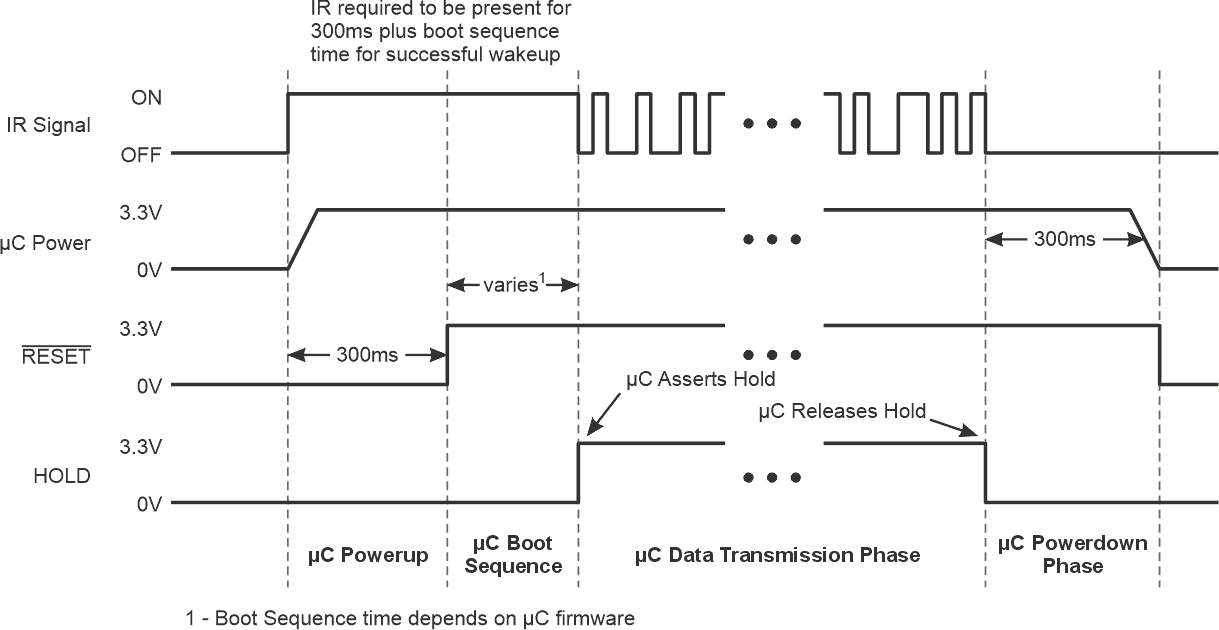Receiving infrared (IR) signals while conserving system power is difficult, and typically requires the inclusion of complex power-management routines in the firmware. You can avoid that problem by disconnecting power to the microcontroller when IR is not present, Figure 1.
 |
|
| Figure 1. | This circuit withholds power from the attached microcontroller until it detects an IR transmission. While in standby mode, its quiescent current is under 2 μA. |
U1 holds the attached microcontroller in an ultra-low power-down state until the phototransistor (Q1) detects an IR signal.
Upon detecting an IR signal and after a suitable delay (300 ms in this case), the circuit connects power to the microcontroller and applies a reset signal to it, Figure 2.
 |
|
| Figure 2. | When the Figure 1 circuit detects an IR signal, it powers and resets the microcontroller. After the IR transmission ends, the microcontroller suspends itself by releasing the Hold line. |
After power-up, the microcontroller must assert its Hold line to prevent the circuit from returning to standby mode when the IR transmission ends. U2 buffers and inverts the IR transmissions. When the microcontroller has completed its tasks and no more IR transmissions are present, it returns the circuit to standby mode by de-asserting the Hold line.
The circuit draws less than 2 μA of supply current while in standby mode, and approximately 40 μA when active. The combined battery monitor and microprocessor supervisor (U1) comes in several versions, offering multiple voltage thresholds for the microcontroller power, and multiple RESET delays. Thus, you should choose the part-number option according to your application. The maximum data rate (determined by Q1) exceeds 10 kbps.